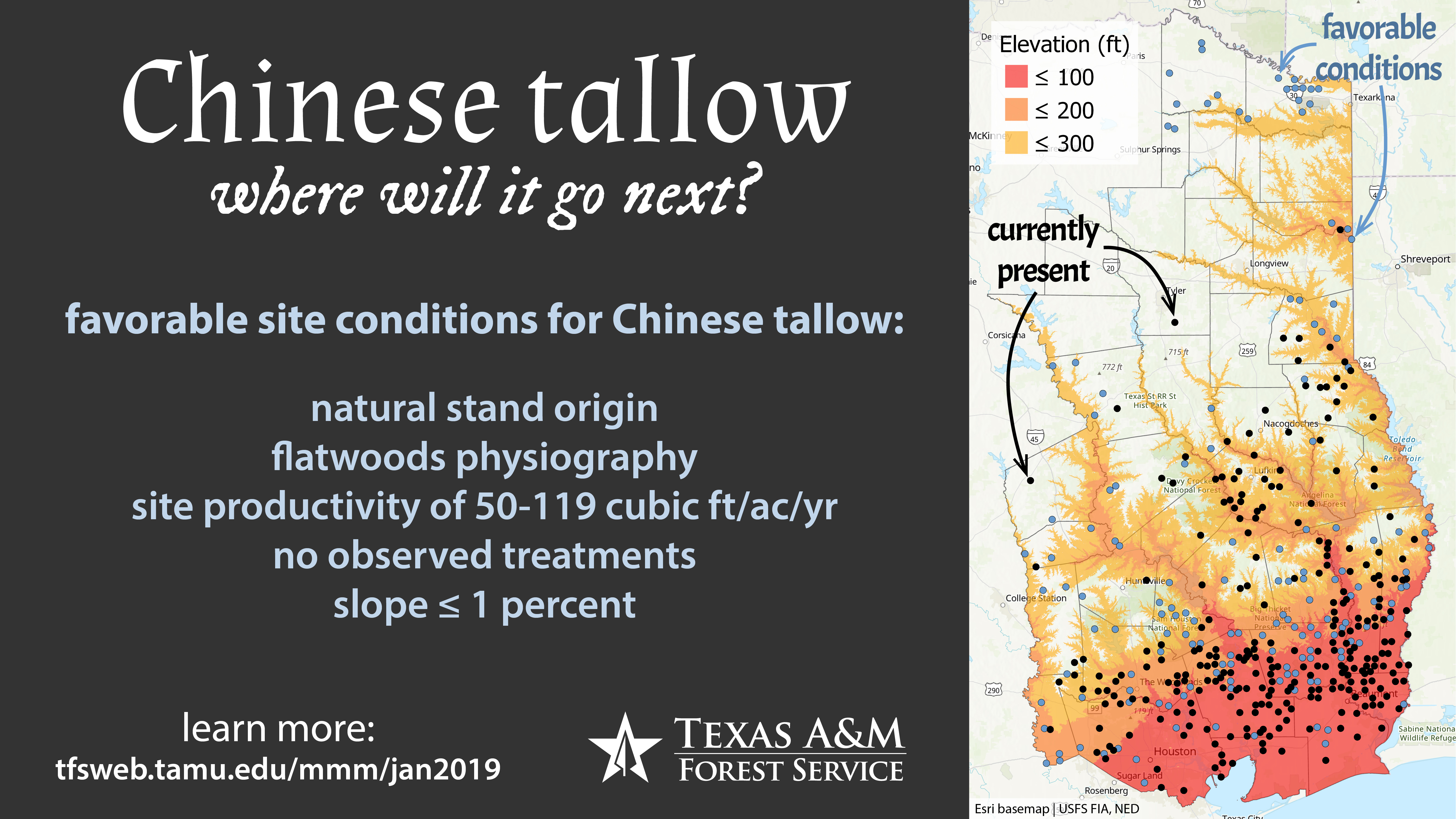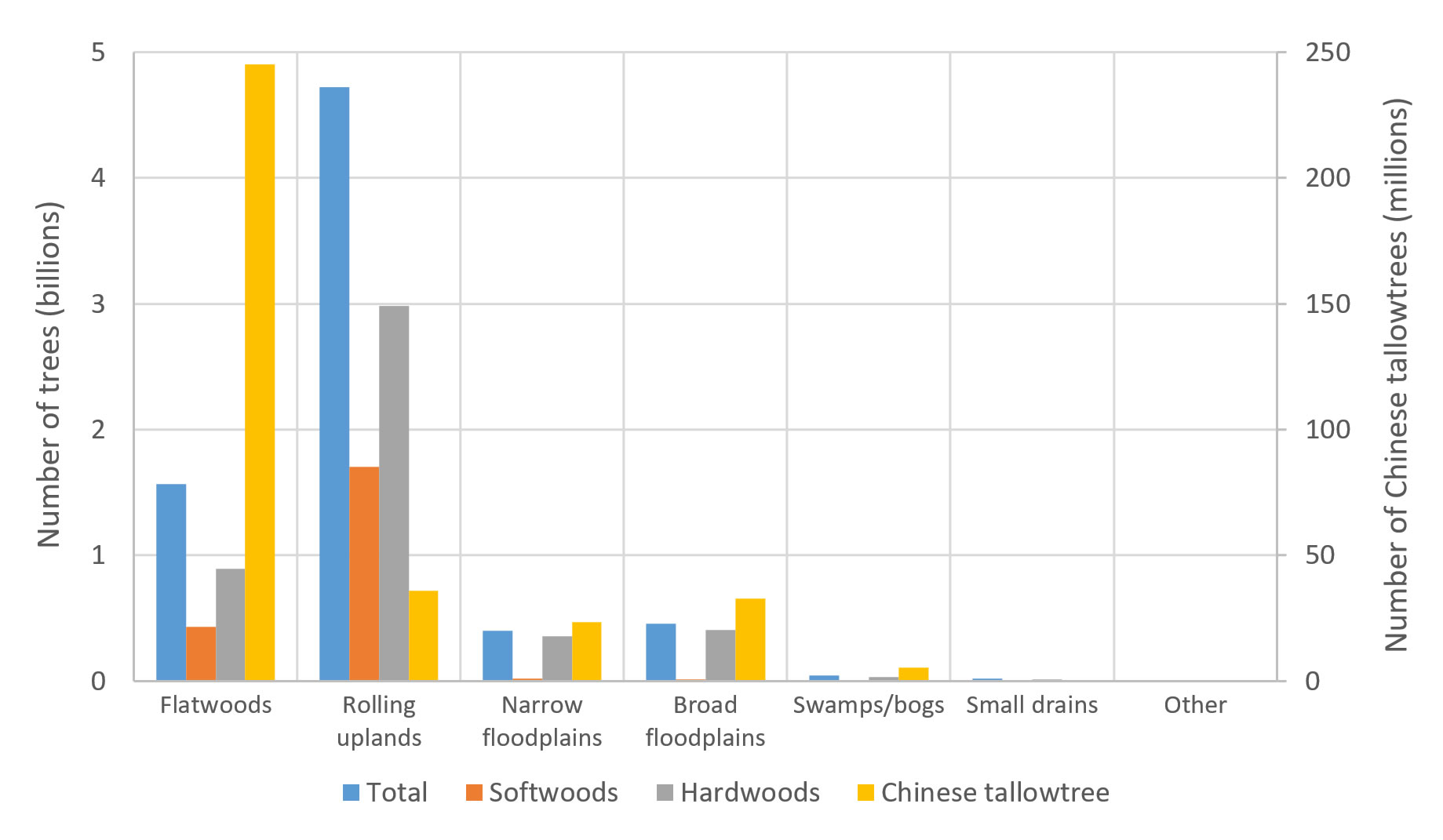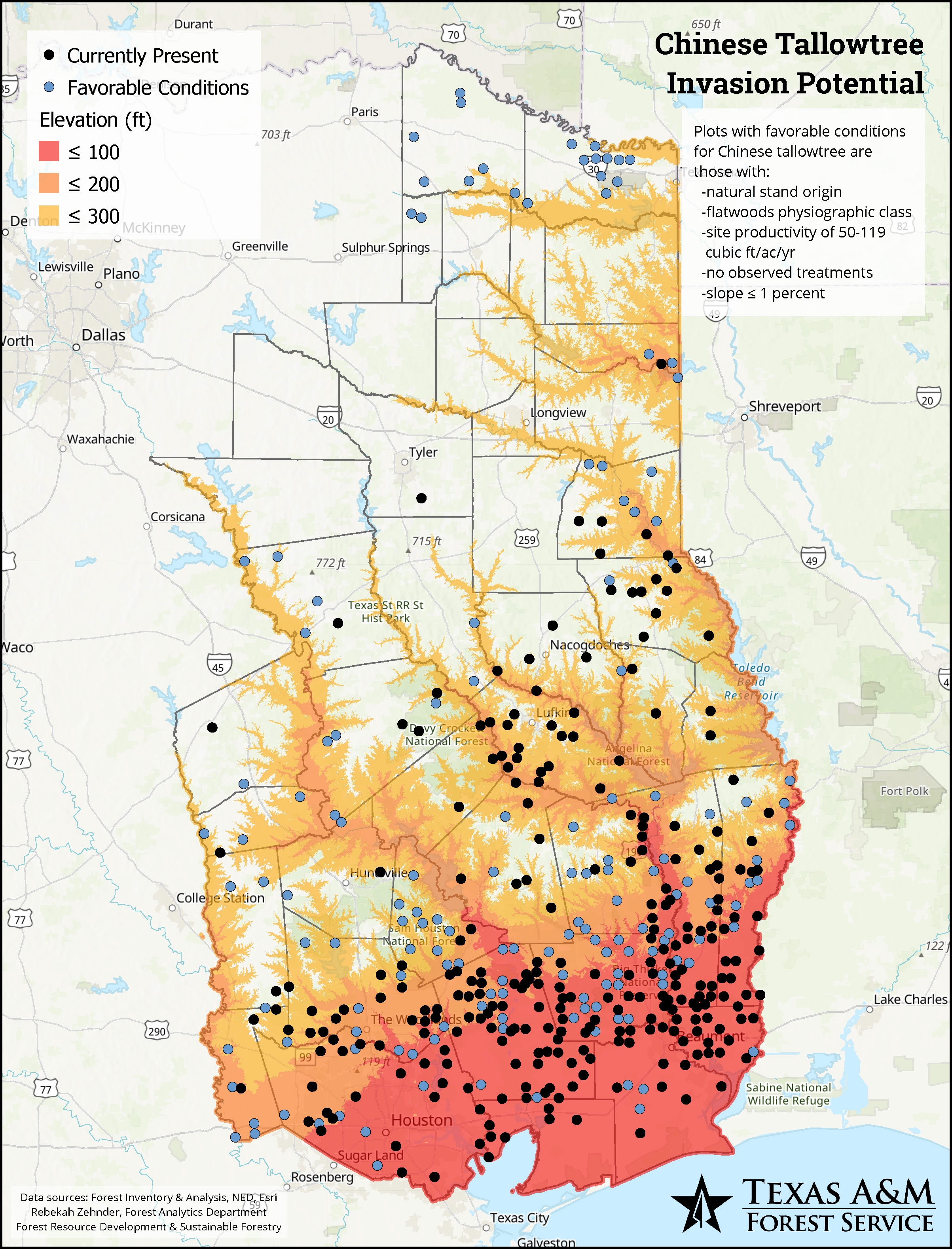
Chinese Tallow: Where Will It Go Next?
Last month we looked at the historical and current distribution of Chinese tallow – an invasive species problematic for forests – in East Texas. To curb the spread and effectively manage, it is helpful to know what kinds of sites are most susceptible to Chinese tallow invasion. In addition to tree data, Forest Inventory and Analysis collects many other attributes on the plot, like physiographic information and signs of active forest management. So, we can take a look at all the plots that have Chinese tallow on them and see what site characteristics they tend to have in common.
We found that Chinese tallow tends to occur on plots with natural stand origin (not planted), flatwoods physiographic class, site productivity ranging from 50 to 119 cubic feet per acre per year, no observed stand treatments (such as cutting, site preparation, or artificial regeneration), and slope of one percent or less. They also tend to be at sites with low elevation, which may be an artifact of being introduced in southeast Texas (near sea level).

Armed with this knowledge about site characteristics, we can map FIA plots with these characteristics to get an idea of where favorable conditions for Chinese tallow invasion exist. This can help forest managers prepare and take preventive action.
[Click to enlarge]

This information is derived from data collected through Forest Inventory and Analysis. The data were processed with PostgreSQL, and the maps were created in ArcGIS Pro.
Join the conversation!
+ Contact
Rebekah ZehnderGeospatial Analyst
200 Technology Way, Suite 1281
College Station, TX 77845
979-458-6630 office
979-458-6633 fax
rzehnder@tfs.tamu.edu